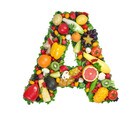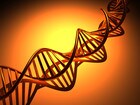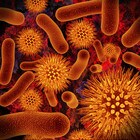German national food consumption studies have shown that a large part of the population consumes too little pure vitamin A in the diet (1, 2, 3). Schoolchildren, older people and pregnant women are particularly affected. Liver and fatty fish are the main sources of vitamin A, but it is not possible to predict to what extent consumption of these foodstuffs can be increased in the long term. For many, beta-carotene represents the most important source of vitamin A. Germans, for example, obtain almost 50% of their intake of vitamin A through the provitamin (4).
Nutrition experts recommend a daily intake of 0.7 to 1.0 mg vitamin A (retinol) for healthy adults. At least 2–4 mg beta-carotene daily are required to reach this level. The average person’s intake falls clearly below these recommendations because still too little beta-carotene is being consumed through fruit and vegetables (5). Since foods rich in beta-carotene alone do not suffice to guarantee the desirable daily intake of vitamin A, juices such as ‘ACE’ drinks which are enriched with the carotenoid, or suitably dosed supplements offer a sensible complement to the supply (6).
As regards safety, beta-carotene in food, fortified foods and dietary supplements (e.g. vitamin tablets or pills) are considered absolutely harmless to non-smokers (7). Smokers are recommended to limit their daily intake to 20 mg beta-carotene. Nutritional health professionals view an undersupply of beta-carotene or vitamin A as posing a greater risk to the general health of the population than an oversupply.
 In the middle of the 1990s beta-carotene became the subject of controversy when two studies reported that the intake of very large amounts (10 to 15 times the recommended daily dose) of the carotenoid over many years as supplements had led to an elevated risk of lung cancer and mortality in heavy smokers (see Beta-Carotene/Safety). Scientists who had hoped they had found a “miracle cure” for the harmful effects of smoking were disappointed. It became clear that taking high doses of micronutrients cannot compensate for an unhealthy lifestyle or smoking – the real risk factor for the development of lung cancer.
In the middle of the 1990s beta-carotene became the subject of controversy when two studies reported that the intake of very large amounts (10 to 15 times the recommended daily dose) of the carotenoid over many years as supplements had led to an elevated risk of lung cancer and mortality in heavy smokers (see Beta-Carotene/Safety). Scientists who had hoped they had found a “miracle cure” for the harmful effects of smoking were disappointed. It became clear that taking high doses of micronutrients cannot compensate for an unhealthy lifestyle or smoking – the real risk factor for the development of lung cancer. Beta-carotene - a safe and necessary source of vitamin A
Beta-carotene - a safe and necessary source of vitamin A Vitamin A deficiencies through gene variants
Vitamin A deficiencies through gene variants Natural skin protection
Natural skin protection Protection against infectious diseases
Protection against infectious diseases